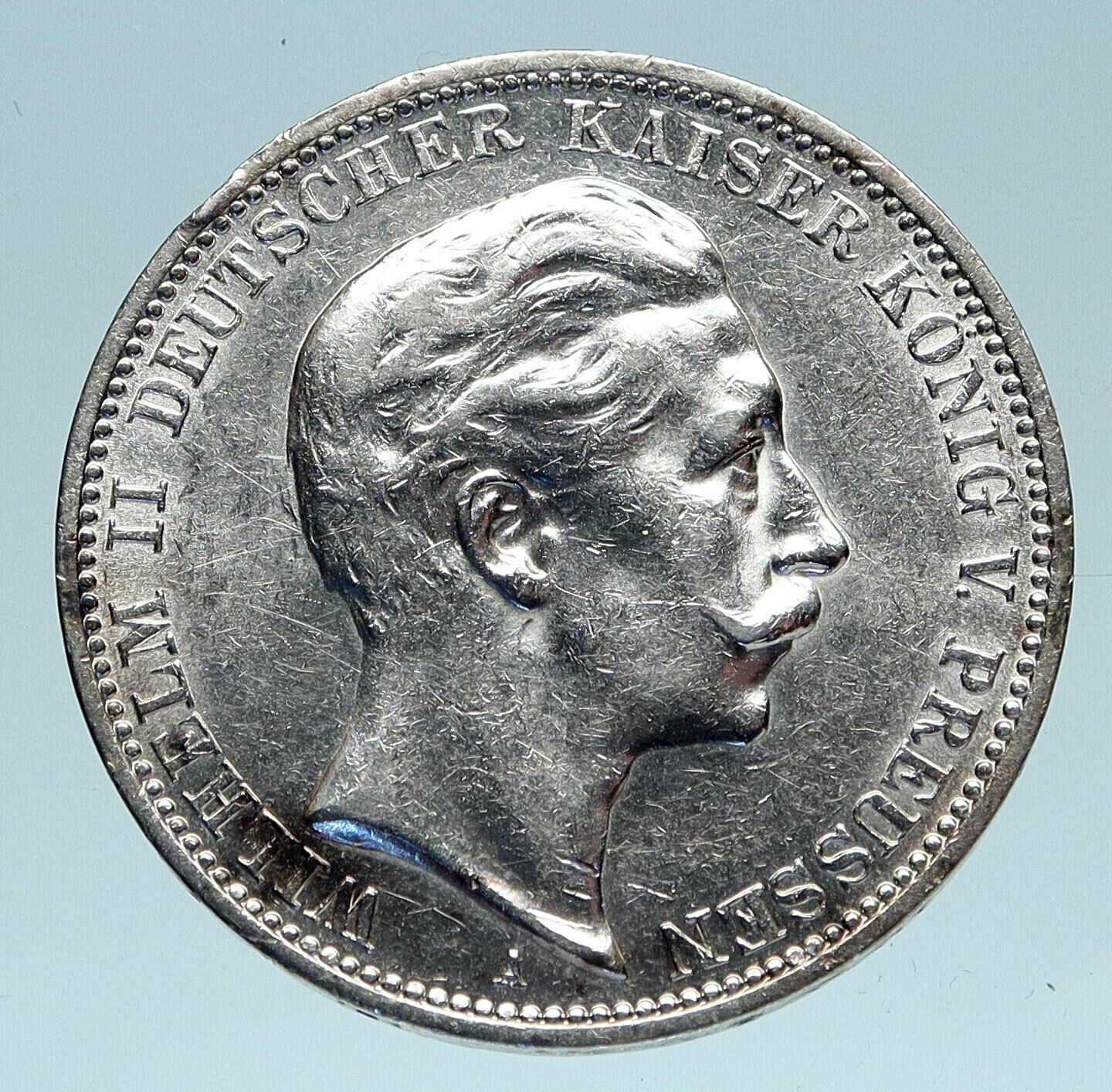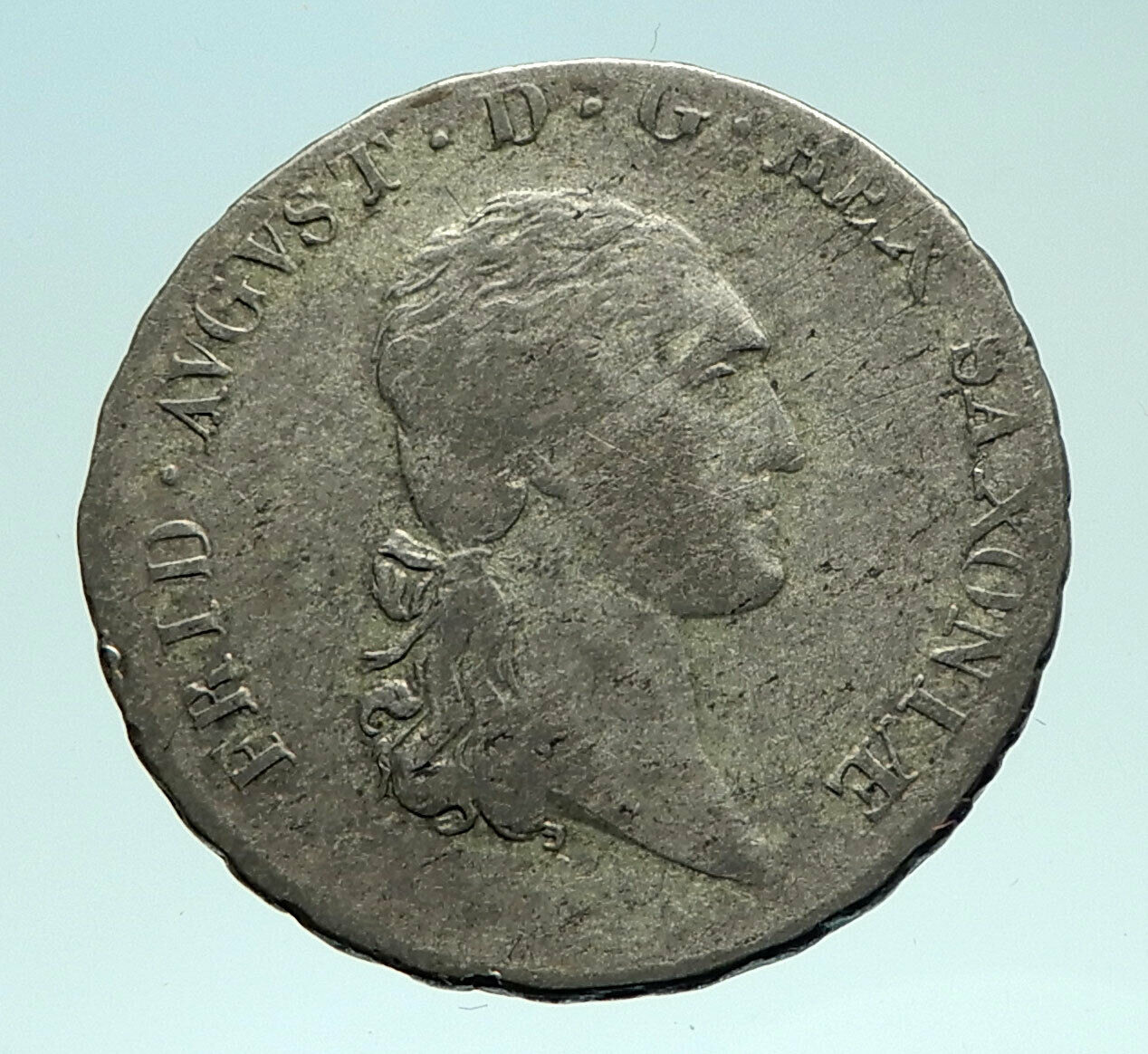|
Germany – German States – Oldenburg – Birkenfeld
Paul Friedrich August – Grand Duke: 1829-1853
1848 Copper 3 Pfennige 23mm (4.53 grams)
Reference: KM# 8 (1848)
PFA GR. HZL. OLDENB. FÜRSTTM. BIRKENFELD, Monogram topped by a crown.
SCHEIDE MÜNZE 3 PFENNIGE 1848, Inscription.
You are bidding on the exact item pictured, provided with a Certificate of Authenticity and Lifetime Guarantee of Authenticity.
 Birkenfeld is a town and the district seat of the Birkenfeld district in southwest Rhineland-Palatinate, Germany. It is also the seat of the like-named Verbandsgemeinde. The town itself has approximately 7,000 inhabitants. Birkenfeld is a town and the district seat of the Birkenfeld district in southwest Rhineland-Palatinate, Germany. It is also the seat of the like-named Verbandsgemeinde. The town itself has approximately 7,000 inhabitants.
The name Birkenfeld has its origin in an old German dialect, Old Frankish. It means something rather like “at the field with the birches” (it is directly cognate with the English words “birch field”). From the name’s Frankish roots it can be inferred that today’s town arose on a spot where there was quite a noticeable stand of birch trees sometime about the year AD 500, and that it was founded by Frankish-German farmers. To this day, there are a great number of birch trees in the bird conservation area at the clay quarries.
The first attestation of the name is spelled Bikenuelt (about 700) or Birkinvelt at the time when it had a documentary mention from Archbishop of Trier Egbert in 981. From this document comes knowledge that Saint Leudwinus (Archbishop of Trier 695-713) had donated to the St. Paulinus’ Abbey in Trier the churches at Birkenfeld and Brombach.
Archaeological finds from the Iron Age, however, bear witness to quite heavy settlement even in the 8th century BC. In the 1st century BC, Roman legions overran the area, and for 400 years, it lay under Roman rule. This is known mainly from finds made in the town’s immediate vicinity. The town that is now Birkenfeld lies right on a Roman road that served as a crosslink between two important military roads, namely the Metz-Mainz road to the south and the Trier-Bingen-Mainz road to the north, which was mentioned by Roman poet Ausonius in his Mosella in AD 350, and which also corresponds along some stretches with the Hunsrückhöhenstraße (“Hunsrück Heights Road”, a scenic road across the Hunsrück built originally as a military road on Hermann Göring’s orders). This crosslink, also known as the Bronzestraße (“Bronze Road”), linked the Glan, Nohen and the Moselle with each other. The Bronzestraße crossed the Nahe in Nohen (villa Aldena) and ran farther on, right through the Wasserschieder Wald, a state forest that still stands today on the town’s outskirts, by way of Gollenberg, by Börfink and on towards Trier.
The Frankish settlement of Birkinvelt was held in the 13th century by the Counts of Sponheim. In 1223, the county was split into the “Front” and “Rear” Counties of Sponheim, and Birkenfeld passed to the latter, and was then held by the counts whose seat was at the Starkenburg (castle, now a ruin) near Trarbach. In 1293, Castle Birkenfeld had its first documentary mention. In 1332, Birkenfeld was granted town rights by Emperor Louis the Bavarian.
After the last Count of Sponheim died in 1437, the “Rear” County was inherited by the Margraves of Baden and the Counts of Veldenz. In 1584, a House of Wittelsbach sideline, in the person of Charles I, Count Palatine of Zweibrücken-Birkenfeld, resided in town. In this same year, expansion work also began on the castle to turn it into a princely residence in the Renaissance style. Exactly 140 years later, the last remnants of the Princely holding of court at Schloss Birkenfeld, as it had come to be known, were swept away. During the Thirty Years’ War (1618–1648), the town itself became in 1635 a theatre of war. Also that year, the Plague broke out in Birkenfeld and claimed 416 lives.
In 1776, under Margrave Karl Friedrich, Birkenfeld became seat of the Badish Oberamt. In this time, Birkenfeld blossomed. The town experienced an economic and cultural upswing. In 1779, for instance, the first “Higher School” was founded. In Napoleon’s time, in 1798, the Rhine’s left bank was ceded to France, whereafter Birkenfeld belonged to the Department of Sarre.
One night in February 1797, Johannes Bückler, known as Schinderhannes, burgled a cloth factory owned by the Brothers Stumm, who would later become coal and steel entrepreneurs on the Saar. A large part of the cloth stolen during this break-in Schinderhannes sold to a fence in Hundheim.[3]
After the Congress of Vienna (1814-1815), the Principality of Birkenfeld was awarded to the Grand Duchy of Oldenburg in 1817 for the contribution of Peter I, then regent of Oldenburg, to the military effort against Napoleon. Under Oldenburg rule, the new palatial castle, which is now the district administration’s seat, was built in 1821. Not only was this built, but so were further buildings in the Governmental Quarter (Regierungsviertel), such as the infantry barracks (until 1963, a Gymnasium building, now the local office for the regulation of expenditures caused by stationed forces), which to this day characterize the town’s appearance with their Classicist style from Oldenburg times.
In the time of the Third Reich, the town became on 1 April 1937 part of the Prussian district of Birkenfeld, which was formed out of the former Oldenburg holdings and the Restkreis (roughly “remnant district”) of the former exclave of Saxe-Coburg from 1814 to 1834, St. Wendel-Baumholder (this designation as a Restkreis had arisen from its being what had been left of the Sankt Wendel district on the Prussian side of the border once the Territory of the Saar Basin had been formed under the terms of the Treaty of Versailles). After the Second World War, Birkenfeld belonged to the French zone of occupation, and since 1946, it has been a district seat in Rhineland-Palatinate.
 Germany, officially the Federal Republic of Germany, officially the Federal Republic of  Germany is a federal parliamentary republic in western-central Europe. It includes 16 constituent states and covers an area of 357,021 square kilometres (137,847 sq mi) with a largely temperate seasonal climate. Its capital and largest city is Berlin. With 81 million inhabitants, Germany is the most populous member state in the European Union. After the United States, it is the second most popular migration destination in the world. Germany is a federal parliamentary republic in western-central Europe. It includes 16 constituent states and covers an area of 357,021 square kilometres (137,847 sq mi) with a largely temperate seasonal climate. Its capital and largest city is Berlin. With 81 million inhabitants, Germany is the most populous member state in the European Union. After the United States, it is the second most popular migration destination in the world.
Various Germanic tribes have occupied northern Germany since classical antiquity. A region named Germania was documented before 100 CE. During the Migration Period the Germanic tribes expanded southward. Beginning in the 10th century, German territories formed a central part of the Holy Roman Empire. During the 16th century, northern German regions became the centre of the Protestant Reformation.
The rise of Pan-Germanism inside the German Confederation resulted in the unification of most of the German states in 1871 into the Prussian-dominated German Empire. After World War I and the German Revolution of 1918-1919, the Empire was replaced by the parliamentary Weimar Republic. The establishment of the Third Reich in 1933 led to World War II and the Holocaust. After 1945, Germany split into two states, East Germany and West Germany. In 1990, the country was reunified.
 In the 21st century, Germany is a great power and has the world’s fourth-largest economy by nominal GDP, as well as the fifth-largest by PPP. As a global leader in several industrial and technological sectors, it is both the world’s third-largest exporter and importer of goods. Germany is a developed country with a very high standard of living sustained by a skilled and productive society. It upholds a social security and universal health care system, environmental protection and a tuition free university education. In the 21st century, Germany is a great power and has the world’s fourth-largest economy by nominal GDP, as well as the fifth-largest by PPP. As a global leader in several industrial and technological sectors, it is both the world’s third-largest exporter and importer of goods. Germany is a developed country with a very high standard of living sustained by a skilled and productive society. It upholds a social security and universal health care system, environmental protection and a tuition free university education.
Germany was a founding member of the European Union in 1993. It is part of the Schengen Area, and became a co-founder of the Eurozone in 1999. Germany is a member of the United Nations, NATO, the G8, the G20, and the OECD. The national military expenditure is the 9th highest in the world. Known for its rich cultural history, Germany has been continuously the home of influential artists, philosophers, musicians, sportsmen, entrepreneurs, scientists and inventors.
|





 Birkenfeld is a town and the district seat of the Birkenfeld district in southwest Rhineland-Palatinate, Germany. It is also the seat of the like-named Verbandsgemeinde. The town itself has approximately 7,000 inhabitants.
Birkenfeld is a town and the district seat of the Birkenfeld district in southwest Rhineland-Palatinate, Germany. It is also the seat of the like-named Verbandsgemeinde. The town itself has approximately 7,000 inhabitants. Germany, officially the Federal Republic of
Germany, officially the Federal Republic of  Germany is a federal parliamentary republic in western-central Europe. It includes 16 constituent states and covers an area of 357,021 square kilometres (137,847 sq mi) with a largely temperate seasonal climate. Its capital and largest city is Berlin. With 81 million inhabitants, Germany is the most populous member state in the European Union. After the United States, it is the second most popular migration destination in the world.
Germany is a federal parliamentary republic in western-central Europe. It includes 16 constituent states and covers an area of 357,021 square kilometres (137,847 sq mi) with a largely temperate seasonal climate. Its capital and largest city is Berlin. With 81 million inhabitants, Germany is the most populous member state in the European Union. After the United States, it is the second most popular migration destination in the world. In the 21st century, Germany is a great power and has the world’s fourth-largest economy by nominal GDP, as well as the fifth-largest by PPP. As a global leader in several industrial and technological sectors, it is both the world’s third-largest exporter and importer of goods. Germany is a developed country with a very high standard of living sustained by a skilled and productive society. It upholds a social security and universal health care system, environmental protection and a tuition free university education.
In the 21st century, Germany is a great power and has the world’s fourth-largest economy by nominal GDP, as well as the fifth-largest by PPP. As a global leader in several industrial and technological sectors, it is both the world’s third-largest exporter and importer of goods. Germany is a developed country with a very high standard of living sustained by a skilled and productive society. It upholds a social security and universal health care system, environmental protection and a tuition free university education.




